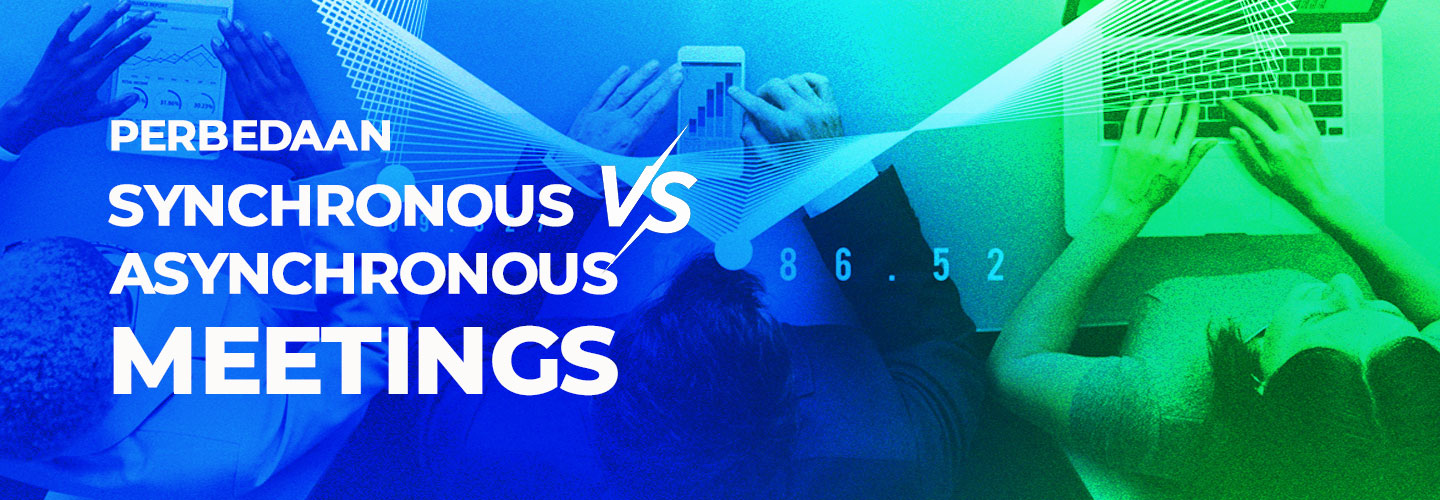Synchronous vs Asynchronous Meetings at Work

Synchronous meeting is a type of meeting that is liked by many people. However, according to a Harvard Business Review study from 2017, as many as 71% of senior managers say that this type of meeting is not productive and efficient. Therefore, asynchronous meetings or better known as asynchronous meetings can be another option.
In contrast to synchronous meetings, asynchronous meetings allow team members to attend at their own pace with less real time communication. While most of these meeting types require the use of a remote meeting tool, asynchronous meetings are gaining popularity and are becoming the choice of many.
The difference between Synchronous and Asynchronous Meetings
The difference between synchronous and asynchronous meetings is that participants in a synchronous meeting are present at the same time, whereas in an asynchronous meeting they are not. Simply put, a synchronous meeting occurs when all participants are present at a prearranged time and place, either in person or online, such as in a Zoom call.
Synchronous meetings can take the form of face-to-face meetings, video conferences, hybrid meetings, and phone calls. By holding synchronous meetings it is expected that participants can be present at the same time at the workplace.
Meanwhile asynchronous refers to something that doesn't happen at the same time. So, in the context of work, asynchronous meetings are collaborations between colleagues who are not at the same time and place. Several types of asynchronous meetings include email, instant messaging, message threads or comments in management tools, voice notes, and pre-recorded videos.
Each synchronous and asynchronous meeting has advantages and disadvantages. It should also be understood that not all talks can be carried out in the same format. In order to choose the most suitable one, here are some types of meetings that are better done asynchronously.
1. Project Status Report
In an asynchronous format, project status update meetings can be more efficient, because everyone can contribute when they have the chance. Plus, they didn't have to put off doing more important work just to say a few words.
2. Announcements
A project status update meeting is more or less the same as an announcement meeting. However, announcement meetings require less communication and feedback. It's important to share some notifications or information with the team, as well as hearing their opinion on the matter. However, to be more efficient, you don't need to do this at one time.
3. Project Reviews
After a sales pitch or presentation, it's important to have a review meeting. This is done to assist team members in pursuing and understanding their work. By holding asynchronous meetings, feedback can be provided, so team members are aware of the progress and progress of their work.
4. Goal progress
Making sure everyone has the same goals is very important. However, don't let it hinder their main job. Here, asynchronous meetings allow you to see everyone's progress goals periodically, thereby saving time and organizational costs.
5. Brainstorming Session
The Harvard Business Review reports that as many as 70% of participants in one study performed worse in a traditional brainstorming session than in an online session. Unlike synchronous meetings, asynchronous meetings can collect feedback anonymously, making participants feel more at ease. Feedback will also be assessed fairly, because no one knows the owner of the opinion.
6. Approval requests
Getting approval is not easy. Getting approval can sometimes take days, even weeks, to work out schedules, and gather the necessary paperwork.
With asynchronous meetings, participants can focus on more important agendas. When participants have free time or breaks, you can collect consent from them. That way, approval will be easier to achieve.
7. Kickoff meeting
Kickoff meetings cover a lot of things, such as setting the project theme, goals, and deadlines for new projects. However, because new details can appear suddenly, the information in the meeting is subject to change.
When it switches to the execution stage, an asynchronous format can be very ideal. You can record and view video presentations, add notes, and allow other participants to share their thoughts.
8. Unproductive Meetings
Meetings aren't always productive, but they are often necessary. Especially to find out about business developments, such as meetings between departments, monthly check-ins, and so on. Through asynchronous meetings, the meetings will be more efficient so that everyone can have more constructive discussions.
The application of synchronous and asynchronous meetings can be adjusted according to the topics that need to be reviewed by the participants involved. However, getting used to meeting face-to-face or at a certain time does not make face-to-face meetings the best choice for discussions. On several occasions, asynchronous meetings can function efficiently if everyone is responsible and disciplined according to their role in the company.